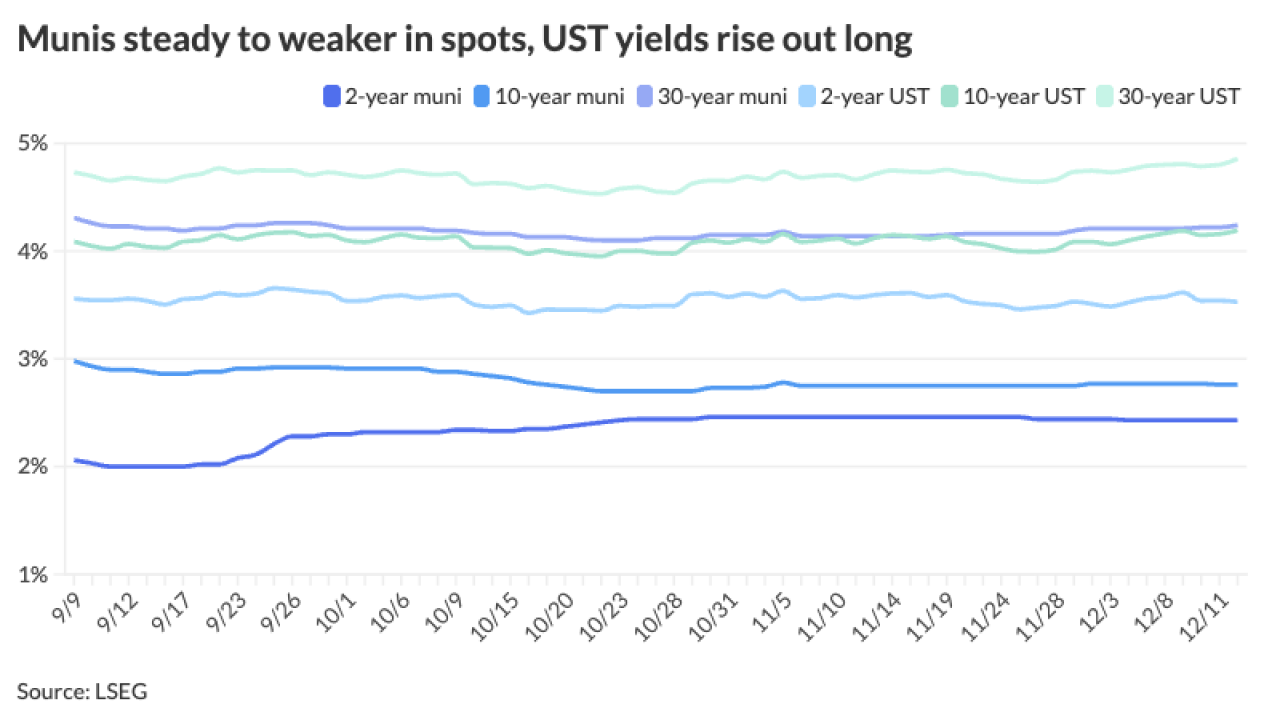
After a difficult few years, municipal floating rate notes are regaining a foothold in the market.
Issuance is up modestly from 2011 levels (see chart at end of the story). The secondary market is active, with about 150 block trades (of at least $1 million par) occurring in an average month during 2012.
Municipal FRNs are issued by state governments and by authorities that support housing, roads, mass transit, medical facilities, education, and other public purposes. They typically carry investment grade ratings, A1 and higher.
The securities have unique characteristics compared with fixed-rate municipal bonds. Prior to 2008, many municipal issuers borrowed at variable rates by issuing securities whose interest rates re-set periodically through weekly or monthly dealer auctions. After the auction markets failed in early 2008, both issuers and investors turned to FRNs with variable rates pegged to the London Interbank Offered Rate or other indexes. Commonly used structures include a fixed spread over a percentage of either 1-month or 3-month LIBOR, and a spread over a percentage of the SIFMA Municipal Swap Index. Both taxable and tax-exempt municipal FRNs have utilized the LIBOR-based indexes, while the SIFMA index is used primarily in tax-exempt deals. The size of the fixed spread is determined by the issuer’s credit spread, the swap arbitrage relationship and supply-demand conditions at the time of issuance. Over time, both the credit and relative value versus swaps of an issue may change.
A $150 million New Jersey Turnpike Authority revenue bond issue sold in September 2012 provides a typical structure. Interest is set initially at 85 basis points over 1-month LIBOR.
A $70.06 million Pennsylvania Turnpike Commission revenue bond issue marketed in November 2012, maturing December 1, 2016, bears an interest rate that fluctuates each week based on 55 basis points over the SIFMA weekly index rate.
LIBOR-based floating rate notes have risen in market value by as much as 10 points or more over the past two months, based on Interactive Data evaluated prices. Contributing factors include the relative outperformance of tax-exempt municipals versus U.S. Treasury bonds, and a handful of large tender offers from issuers. The accompanying chart displays the recent evaluated price history for three such issues.
Through November 29, U.S. tax-exempt FRN issuance stands at approximately $14 billion for 2012, roughly 1% above the total for all of 2011, according to data from Interactive Data’s MuniViewSM service. The most frequent uses of proceeds among this year’s deals were for single-family housing (71 out of 230 new FRNs marketed in 2012), general purpose, student loans, hospitals, mass transit, and primary/secondary education. Recent issuers include the Pennsylvania State Turnpike Commission; Idaho Housing and Finance Association; New York City Metropolitan Transit Authority; state student loan authorities in Vermont and Rhode Island; and New Jersey Economic Development Authority.
Since 2011 a number of closed-end tax-exempt funds have issued floating-rate preferred shares to preserve the funds’ leverage while retiring outstanding auction-rate securities (ARS) and auction-rate preferred shares (ARPS) created prior to the financial crisis. The new floating-rate preferreds carry titles such as Variable Rate Demand Preferred Shares (VRDP), Floating Rate Municipal Term Preferred Shares (MTPS), and Variable Rate Muni Term Preferred Shares (VMTP).





